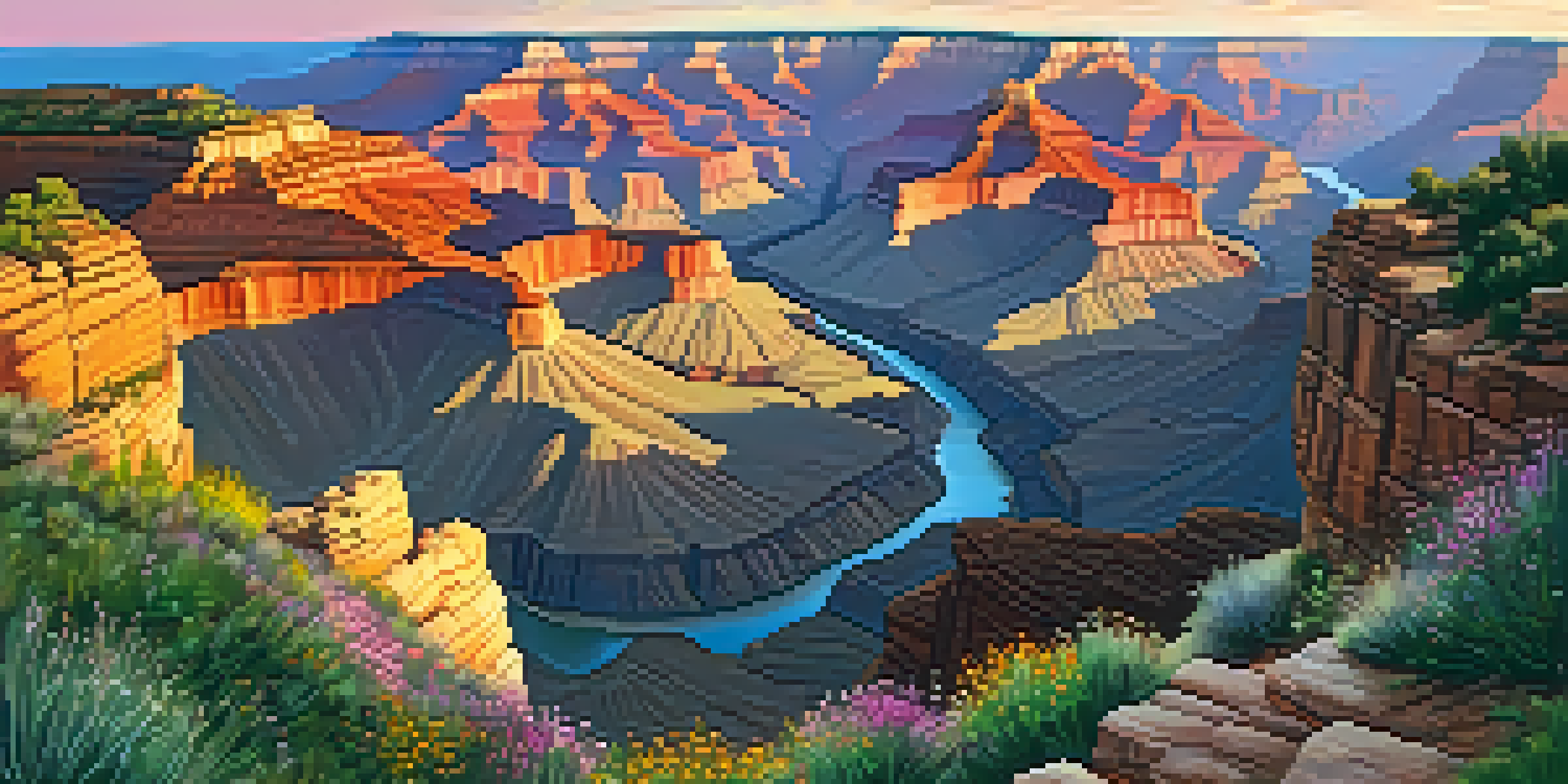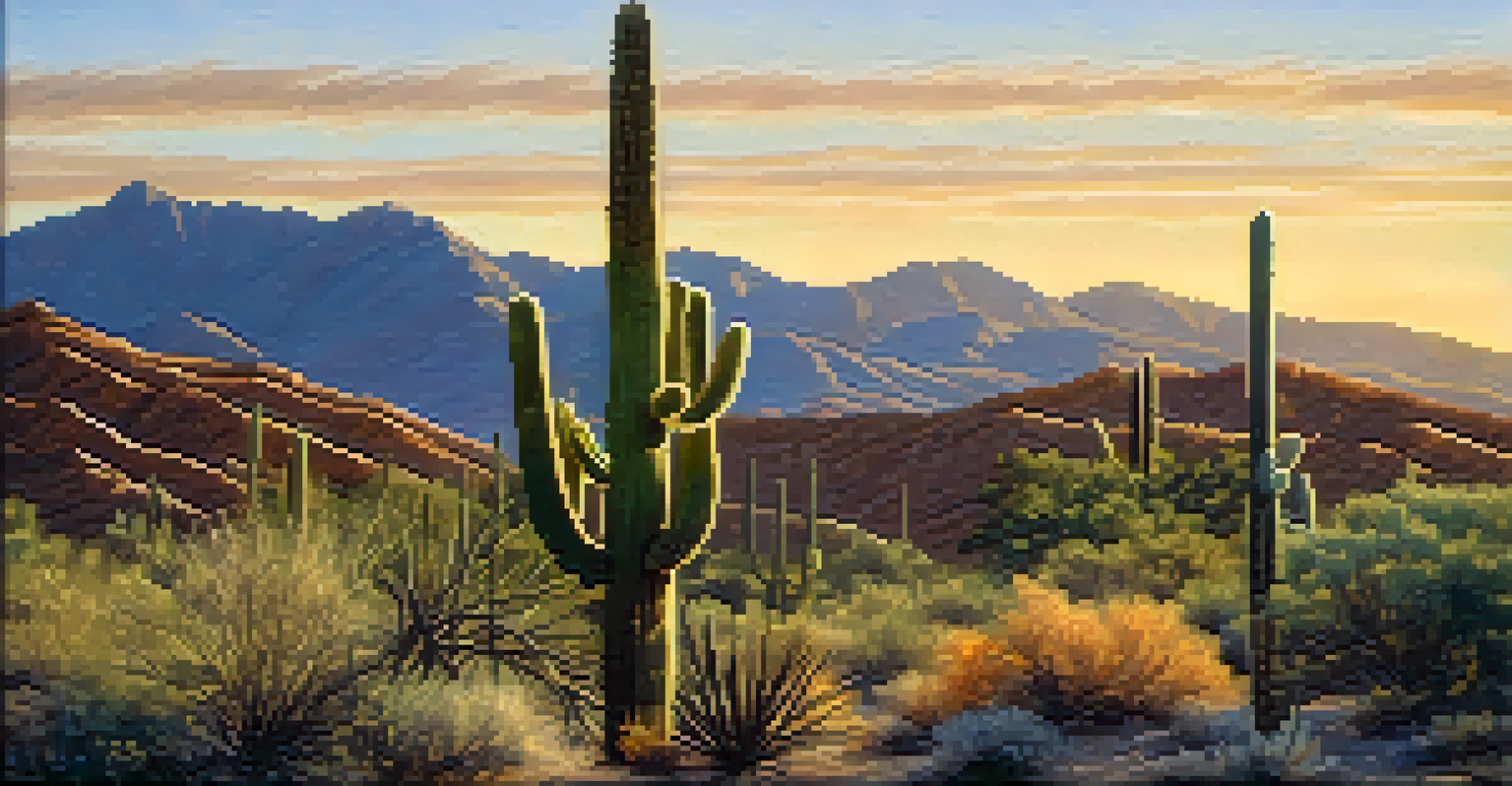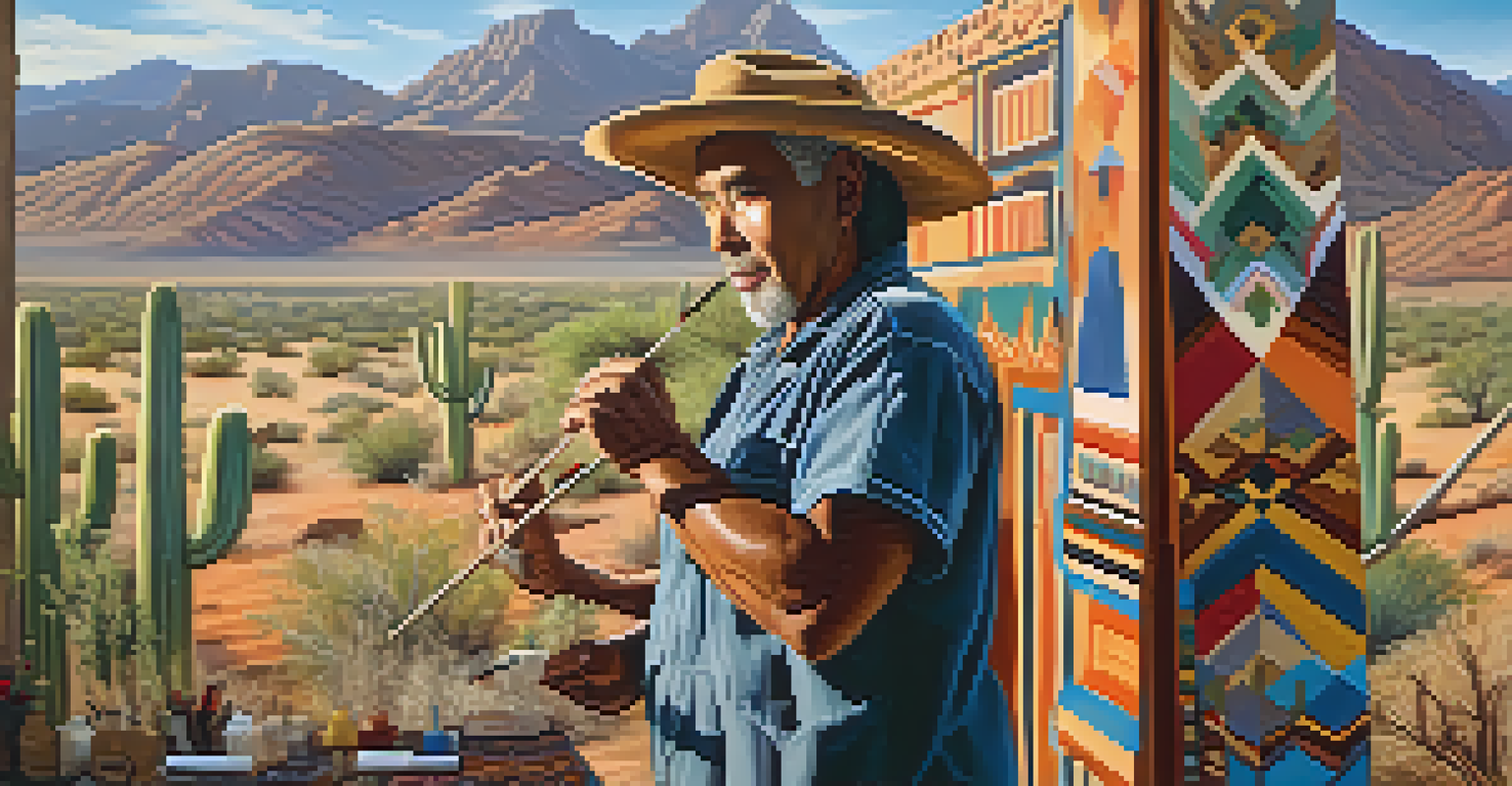Key Figures in Arizona's National Parks Development

The Visionary Leaders Behind Arizona's Parks
In the early 20th century, several leaders emerged as champions for Arizona's national parks. Figures like Theodore Roosevelt played a pivotal role in the conservation movement, advocating for the establishment of protected areas. Their vision was not just about preserving landscapes but about creating spaces for future generations to enjoy.
In every walk with nature one receives far more than he seeks.
These leaders understood the importance of natural beauty and biodiversity, pushing for the creation of parks like Grand Canyon and Saguaro. Their efforts laid the groundwork for the National Park Service, which would later oversee these treasures. These visionary leaders inspired a sense of stewardship that resonates to this day.
Without the dedication of these individuals, Arizona's stunning landscapes might have been lost to development. Their legacies remind us of the power of advocacy and the importance of protecting our natural heritage.
Influential Politicians and Their Impact
Throughout Arizona's history, several politicians have played vital roles in national park development. Senators and representatives often championed legislation that protected vast areas of land, ensuring they remained untouched by commercial interests. Their influence helped secure funding and support for park initiatives.

One notable example is former Arizona Congressman Morris Udall, who was instrumental in the establishment of several national parks and monuments. His efforts not only preserved natural beauty but also promoted outdoor recreation and tourism, benefiting local economies. Politicians like Udall understood that parks were essential for both environmental and economic health.
Champions of Arizona's Parks
Early leaders like Theodore Roosevelt played crucial roles in advocating for the protection of Arizona's national parks, ensuring their preservation for future generations.
The impact of these politicians continues to shape Arizona's parks today. Their legislation has fostered a culture of conservation that encourages ongoing support for national treasures.
Conservationists Who Made a Difference
In addition to politicians, conservationists have been crucial in Arizona's national parks development. Individuals like John Muir and Aldo Leopold recognized the importance of protecting natural spaces and advocated passionately for conservation. Their writings and activism helped inspire a national movement to safeguard America's landscapes.
The land ethic simply enlarges the boundaries of the community to include soils, waters, plants, and animals, or collectively: the land.
Muir, often referred to as the 'Father of the National Parks,' emphasized the spiritual and intrinsic value of nature. His philosophies resonated with many, leading to greater public support for national park initiatives. Leopold's land ethic further advanced the idea that humans are part of the ecosystem, urging responsible and sustainable practices.
The work of these conservationists laid a philosophical foundation for the preservation of Arizona's parks. Their ideas continue to influence modern conservation efforts, reminding us of the interconnectedness of all living things.
Local Indigenous Communities and Their Role
Indigenous communities have long been stewards of the land that is now protected as national parks in Arizona. Tribes like the Hopi, Navajo, and Havasupai have rich histories tied to these landscapes. Their deep spiritual connections to the land inform a unique perspective on conservation and land use.
As development increased, these communities advocated for recognition and protection of their ancestral lands. Their voices have become increasingly important in discussions about land management and park policies. The inclusion of Indigenous knowledge is vital for a comprehensive understanding of these ecosystems.
Indigenous Voices in Conservation
Local Indigenous communities have historically served as stewards of the land, and their insights are vital for effective conservation and land management today.
Today, many national parks collaborate with Indigenous tribes to preserve cultural heritage while ensuring ecological integrity. This partnership fosters a deeper appreciation for the land's history and the wisdom that Indigenous communities bring to conservation efforts.
Scientists and Researchers in Park Development
Scientific research has played a critical role in shaping the management of Arizona's national parks. Ecologists, biologists, and geologists contribute valuable insights into the ecosystems found within these protected areas. Their findings help inform conservation strategies and enhance visitor experiences.
One notable figure is Dr. David Douglas, whose early botanical studies in the region helped identify plant species unique to Arizona. His work laid the groundwork for understanding the biodiversity that parks like Saguaro protect. Such research is essential for addressing challenges like climate change and invasive species.
As we face new environmental challenges, the role of scientists becomes more crucial. Their ongoing research ensures that park management practices are based on sound science and adaptive strategies.
The Role of Nonprofits and Advocacy Groups
Nonprofit organizations have been instrumental in advocating for Arizona's national parks. Groups like the National Parks Conservation Association work tirelessly to protect park resources and promote policies that benefit these natural landscapes. Their efforts often complement governmental initiatives, adding a layer of grassroots support.
These organizations mobilize volunteers for clean-up events, educational programs, and advocacy campaigns. By raising awareness about the importance of national parks, they engage the community in conservation efforts. Their work has led to increased funding and resources for park maintenance and preservation.
Tourism's Dual Impact on Parks
While tourism boosts the economy and awareness of Arizona's national parks, it also necessitates careful management to protect fragile ecosystems from degradation.
The collaboration between nonprofits and governmental bodies highlights the power of collective action. Together, they strive to ensure that Arizona's parks remain vibrant and accessible for everyone.
The Influence of Tourism on Park Development
Tourism has a significant impact on the development and maintenance of national parks in Arizona. The influx of visitors not only provides economic benefits but also raises awareness about the importance of preservation. Parks like the Grand Canyon attract millions of tourists each year, generating revenue that supports park services.
However, increased tourism also poses challenges, such as environmental degradation and overcrowding. Park officials must balance the need for visitor access with the imperative to protect fragile ecosystems. Strategies like timed entry systems and educational programs are being implemented to manage the flow of tourists responsibly.

Ultimately, the relationship between tourism and park development is complex. While tourism can drive funding and awareness, it requires careful management to ensure that the natural beauty of these parks is preserved for future generations.
Future Directions for Arizona's National Parks
Looking ahead, the future of Arizona's national parks will depend on continued advocacy, research, and community involvement. As climate change and other environmental pressures increase, it will be crucial to adapt park management strategies accordingly. Engaging the public in these discussions will ensure a shared responsibility for preservation.
Innovative approaches, such as enhancing visitor experiences through technology and education, can help foster a deeper connection to these natural spaces. Collaborative efforts among government agencies, nonprofits, and local communities will be essential in navigating the challenges ahead.
By reflecting on the contributions of key figures throughout history, we can draw inspiration for the future. Their legacy serves as a reminder that protecting our national parks is a collective responsibility that will shape the landscapes for generations to come.